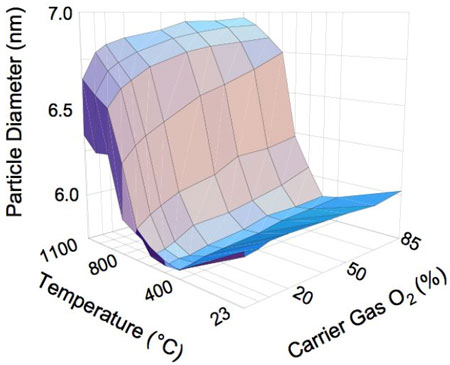11/14/2007
Up in the air
Recent research from the group of Professor Jeffrey
T Roberts.
Silicon nanoparticles have many potential applications, for
instance in photovoltaic cells. A key technical challenge to making these particles
useful is in controlling their susceptibility to oxidation. Although there
is a rich literature on the oxidation of silicon at extended surfaces, very
little is known about how oxides form at the surface of a nanoparticle.
Jason Holm, a graduate student working in Jeff Roberts' laboratory, has developed a new and elegant way to study the oxidation of size-selected silicon nanoparticles covered with a layer of adsorbed hydrogen. The work, which was just published in Langmuir, describes how to study oxidation of particles in the aerosol state. One advantage of working with aerosol particles is that the particles interact only with the gas phase, with no possibility of substrate- or solvent-induced effects. The kinetics of reaction of 6 nm diameter particles with molecular oxygen were studied on-line by measuring oxidation-induced changes in particle diameter. Infrared spectroscopy, time-of-flight secondary ion mass spectrometer, and transmission electron microscopy provided complementary mechanistic information. The results of this study suggest that surface-bound hydrogen passivates a silicon nanoparticle against oxidation, but it may not be possible to create surface hydrogen layers that are perfect enough to prevent all oxidation.
[J. Holm and J. T. Roberts,
"Thermal Oxidation of 6 nm Aerosolized
Silicon Nanoparticles: Size and Surface Chemistry Changes," Langmuir 2007,
23, 11217-11224.]

|